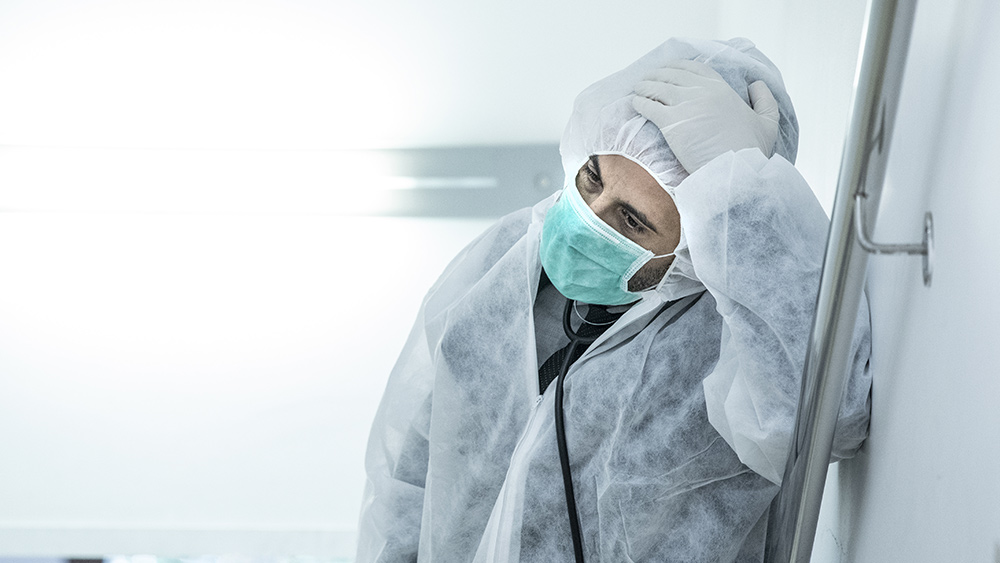Going under the knife isn’t always necessary for patients who experience chest pain, caution researchers
03/25/2020 / By Darnel Fernandez

When patients go to a medical practitioner to complain about chest pain, they often end up undergoing catheter angiography to see the adequacy of their blood supply to the heart. However, new research suggests there are much safer and non-invasive procedures available that can provide an equally accurate diagnosis.
A study published in the journal BMJ found that coronary computed tomography (CT) angiography — a non-invasive imaging method — is just as effective as the standard coronary angiography. Patients with suspected coronary artery disease (CAD) are usually examined using cardiac catheterization for coronary angiography, which involves inserting a tube into a blood vessel through a small incision in either the groin or the heart. This tube is then moved toward the heart to measure its blood supply.
However, this procedure poses a risk for patients. The researchers reported that 58 percent of the 880,000 patients who undergo coronary angiography in Germany each year do not even need this type of invasive intervention. But with coronary CT angiography, health care professionals can provide an equally accurate diagnosis without the need for an invasive procedure.
A non-invasive diagnostic tool
According to the Centers for Disease Control and Prevention (CDC), CAD is one of the most common types of heart disease in the United States. It is characterized by a buildup of plaque along the walls of the arteries, which limits blood supply to the heart by partially or totally blocking blood flow. The symptoms of CAD include dull chest pain or a feeling of tightness in the chest. If left unchecked, this disease can cause a heart attack or sudden cardiac death.
For their study, researchers from Charite — Universitatsmedizin Berlin — an international research consortium — determined whether coronary CT angiography should be done on patients who were at risk of developing CAD, and whether this diagnostic method differs between subgroups. (Related: Chinese Medicine can improve coronary artery disease by reducing inflammation: Study.)
Research teams from 22 different countries analyzed data from more than 5,300 patients who participated in 65 studies. They found that non-invasive CT angiography is an effective diagnostic technique that can identify those with low to intermediate risk of CAD.
“Physicians can determine a patient’s probability of having CAD using individual factors such as age, sex and type of chest pain,” said Marc Dewey, one of the authors of the study.
“If this probability is between 7 and 67 percent, coronary CT angiography will provide a reliable diagnosis as to whether or not the patient has narrowed arteries. Cardiac catheterization is indicated in patients with higher probabilities, as these patients are likely to need an intervention.”
According to the researchers, coronary CT angiography is a gentle technique that lasts no more than a few minutes. It makes use of an X-ray machine that can take a thousand images per second from various angles. The machine then combines these imagines to produce a 3D reconstruction of the patient’s heart while contrast agents make the coronary arteries visible. With this technique, clinicians can easily visualize the narrowed segments caused by coronary artery disease.
“Our findings will make it easier for physicians to determine which patients may benefit from having a coronary CT angiogram rather than a catheter-based procedure to diagnose coronary artery disease,” said Dewey.
Today, country-specific guidelines vary in terms of the course of action they recommend to clinicians when dealing with suspected cases of CAD. The researchers hope that their study could contribute to the harmonization of clinical practice guidelines
Learn the latest news on coronary artery disease and other heart diseases at Heart.news.
Sources include:
Tagged Under: coronary angiography, coronary computed tomography angiography, CT angiography, diagnostics, future science, future tech, goodtech, heart disease, heart health, innovations, inventions, medicaltech, non-invasive, research




















